The Sebright Bantam chicken is a beautiful bird that makes a great addition to any flock. The Sebright is known for being calm and docile, which makes them perfect for both experienced chicken keepers and first-timers alike.
Best known as an ornamental breed seen in shows, they aren’t often heard of in the hobby farming world.
However, these head-turning pretty birds still have much to offer poultry enthusiasts.
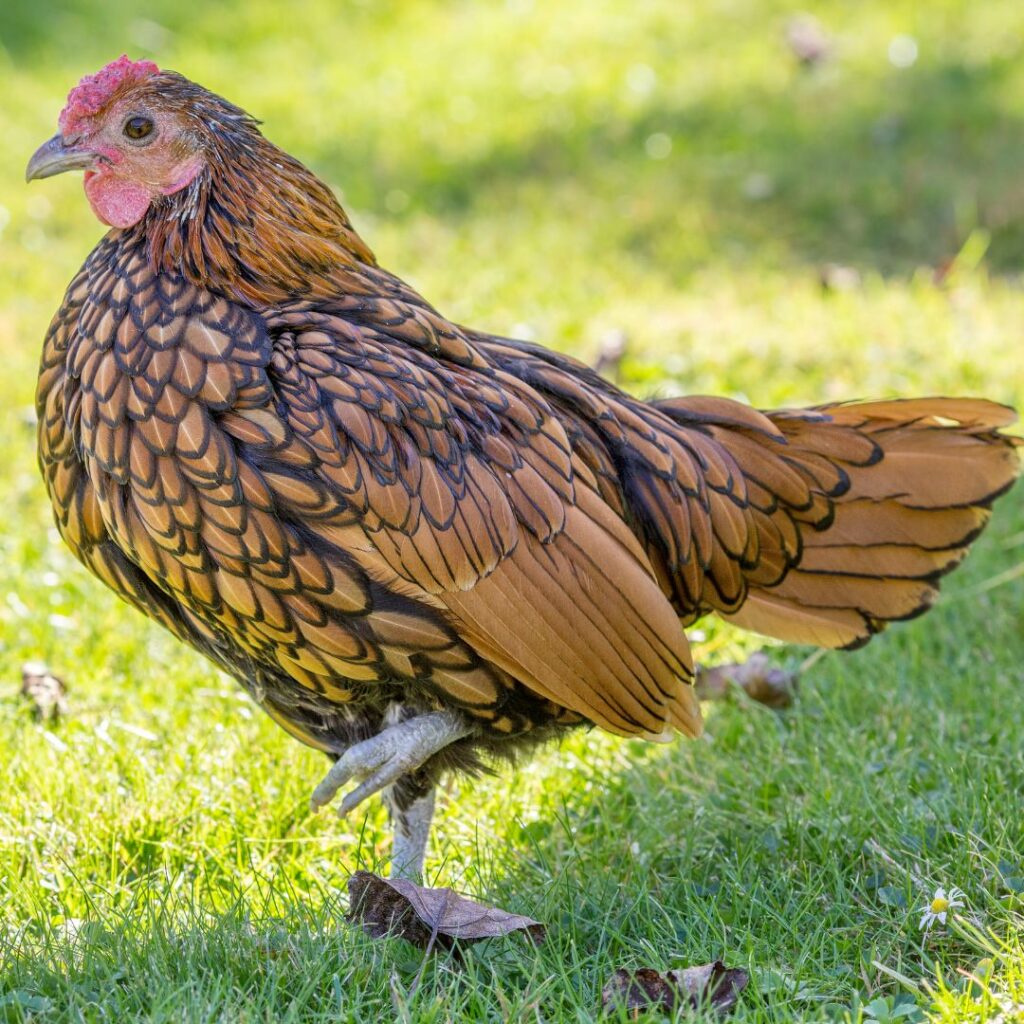
Background and History of the Sebright Bantams; Namesake of Sir John Sebright
The Sebright Bantam breed was developed in the early 19th century by Sir John Sebright, named after the breed. The Sebright is unique because it is the only breed named after its creator, Sir John Sebright. (Sebright chicken is spelled without the a, it is not seabright chicken)
Sir John was an Englishman with a passion for poultry breeding and devoted his life to creating new and unique chicken breeds. The Sebright Bantam is one of his most famous creations.
This breed was developed through careful selection and cross-breeding of several existing bantam breeds. Sir John’s goal was to create a compact bird with beautiful plumage, and he succeeded admirably.
The first recorded sighting of a Sebright Bantam chicken was in 1834, and the breed quickly gained popularity in England. Eventually, the Sebright made its way to America, where it has been a favorite among chicken keepers ever since.
This breed was accepted by the American Poultry Association and the American Bantam Association in 1874, making it one of APA’s and ABA’s originally recognized breeds.
Sebright Standard
Both the Golden-Laced Sebright and Silver-Laced Sebright are recognized by the American Bantam Association (ABA) as well as the American Poultry Association (APA)
Appearance of the Sebright Bantam Chicken
The Sebrights are the only chicken breed of chicken to be hen feathered. Unlike other chickens, the male’s hackle, saddle, and tail are devoid of pointed sex feathers.
A True Bantam Breed
The Sebrights are ‘true’ bantams, meaning they were not bred (created) from a standard-sized chicken breed.
Breed Physical Characteristics
The Sebrights are very small, even for bantams. Both the male and female will be at or very close to 1.5 pounds at full maturity.
They bear a rose comb type that is a deep red (also referred to as mulberry), have small heads, and have large round dark eyes.
The Sebright has a grey, clean leg (meaning no feathering).
Although their status is small and compact, their beauty is enhanced by their short backs giving their breasts even more distinction.
The wings of Sebright chickens are large and long and angle downwards. Their tail is angled upwards, giving the chicken a lively appearance.
Sebright Bantam Baby Chicks
Golden Sebright bantam chicks have beautiful golden heads with dark brown backs and lighter brown streaks running down their backs. The light tan coloration is most visible on the wing tips and chests.
Silver Sebright Bantam chicks have white heads and black backs with two white streaks.
Both the silver and golden Sebright chicken colorations have blue-slate legs and feet on their baby chicks.
Appearance of Golden Sebright Bantam
Golden Sebright adults have a golden bay hue with black outlines on the outer edges of each feather, giving them that beautiful gold-laced plumage. There is no difference in the feather coloring of the male and female.
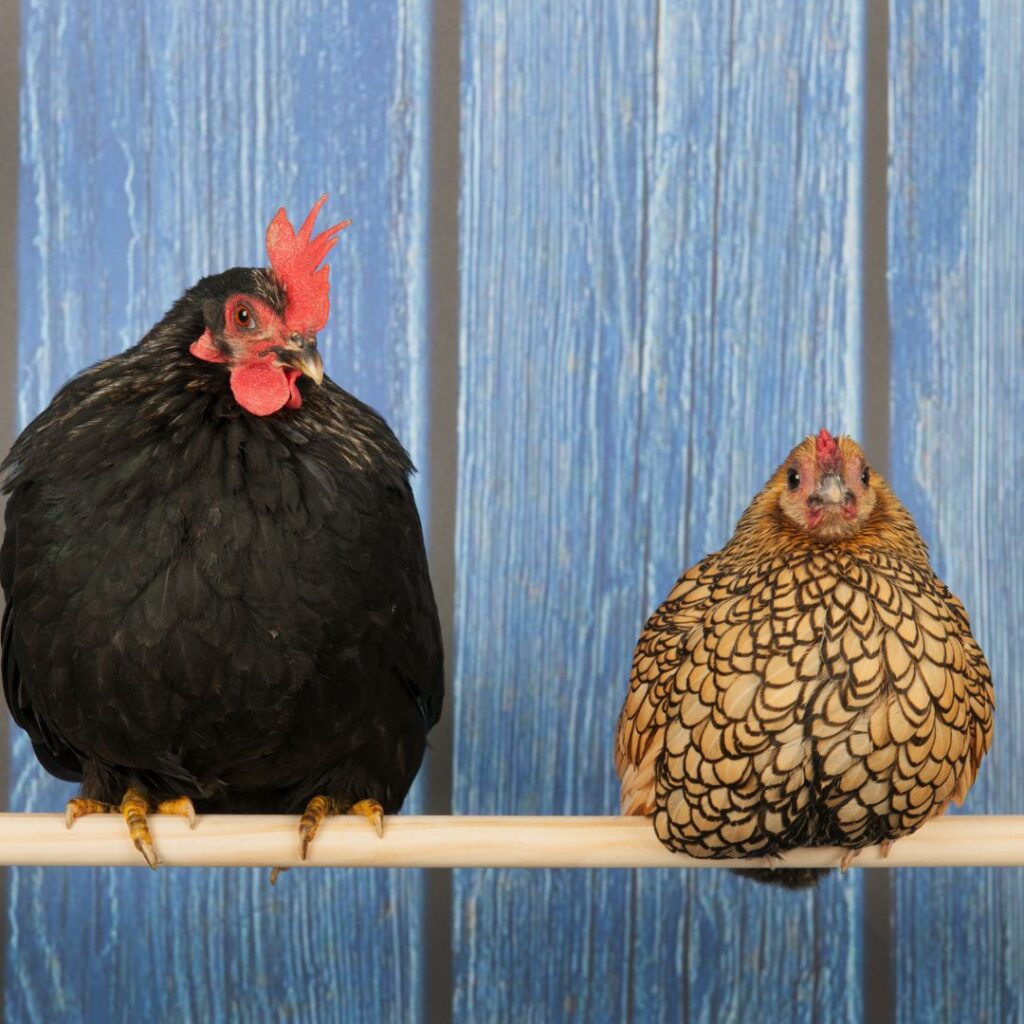
Appearance of the Silver Sebright Bantam.
The plumage of an adult Silver Sebright is black with white lacing. Their feathers look almost like a coloring book page ready to be filled in. They are well-known for their attractive silver-laced plumage and, like the Golden Sebright, the fact that both males and females are colored the same.
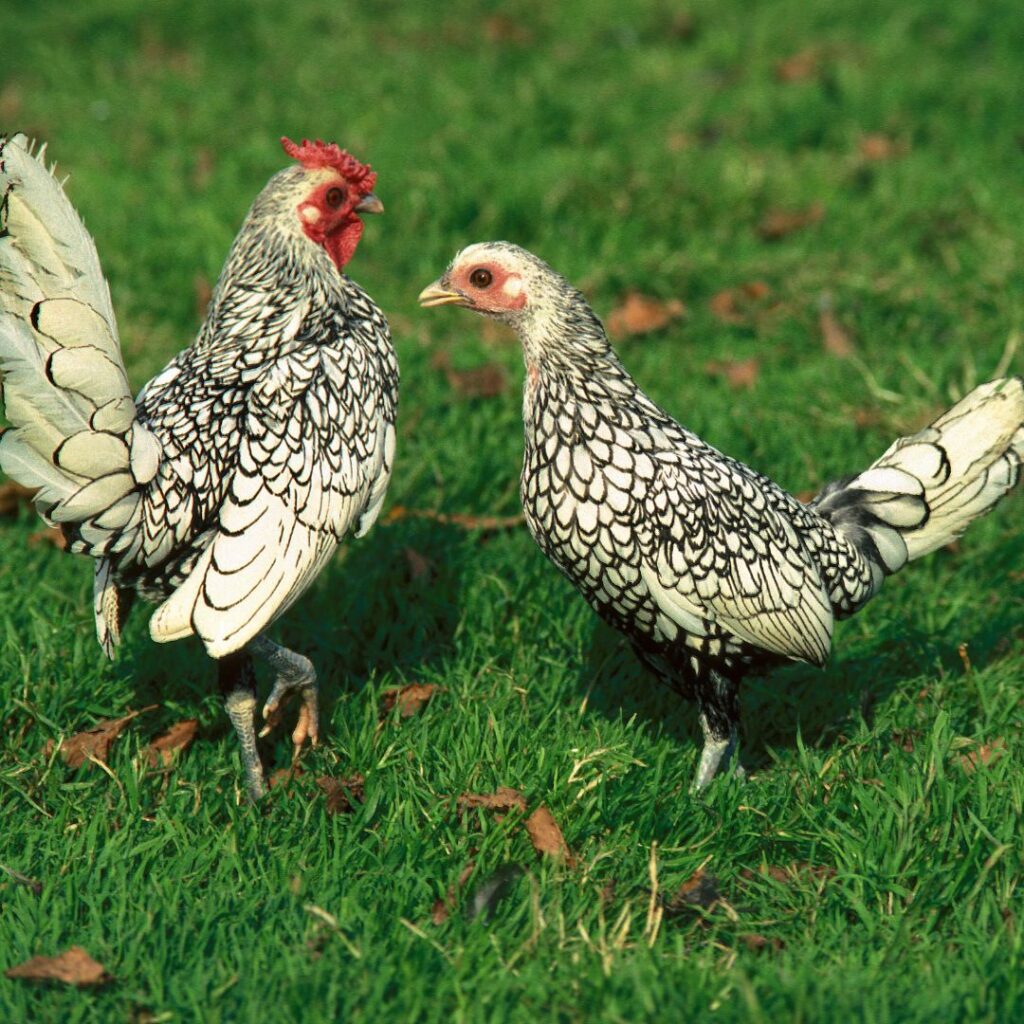
Temperament
Are Sebright bantams friendly?
Sebrights are not only friendly, but they also enjoy socializing. They’re naturally curious and active, making them a delight to watch as they explore.
They aren’t outwardly affectionate birds, but if you start when they are young with handling them (picking up and patting) while hand-feeding treats, you can easily get them comfortable with being part of your human social circle.
These laced beauties get along well with other chickens, although larger breeds can sometimes bully them. For this reason, keeping Sebrights with other small breeds or bantams is best.
Are The Sebright Chickens Noisy?
The Roosters are a bit high-pitched, almost a shrilly tone. Hens are fairly quiet if wandering around but can be chatty if you interact with them, tossing treats or patting them.
Most find the hens carry an acceptable noise level if you’re looking for an urban (city) chicken.

Do Sebright chickens lay eggs?
Yes, as with any chicken (or bird, for that matter), the Silver Sebrights and Gold Sebright produce eggs. However, they are not prolific egg layers.
How often do Sebright chickens lay eggs?
Once – twice a week. Climate and inherited factors can play a role in egg production with this breed. We won’t kid you; they will not be a reliable food source (eggs) for your family.
Did your Sebright Hen Stop Laying Eggs? There could be many reasons why; find out more in this link.
How many eggs do Sebright chickens Produce a year?
Most Sebright bantams will provide you with 50 or so eggs a year. However. in warmer climates, and a bird from a reputable breeder and perfect living conditions, you could get lucky and reap the benefits of up to 100 eggs a year. Although, this is part ‘luck’ part environment as much as it is genetics.
What color eggs do Sebright bantams lay?
White to cream-colored eggs.
Read About The Leghorn Chicken and It’s Prolific Egg Laying (White Eggs) Here.
If you find yourself looking for a blue egg-laying hen, check out our article on the Araucana chickens.
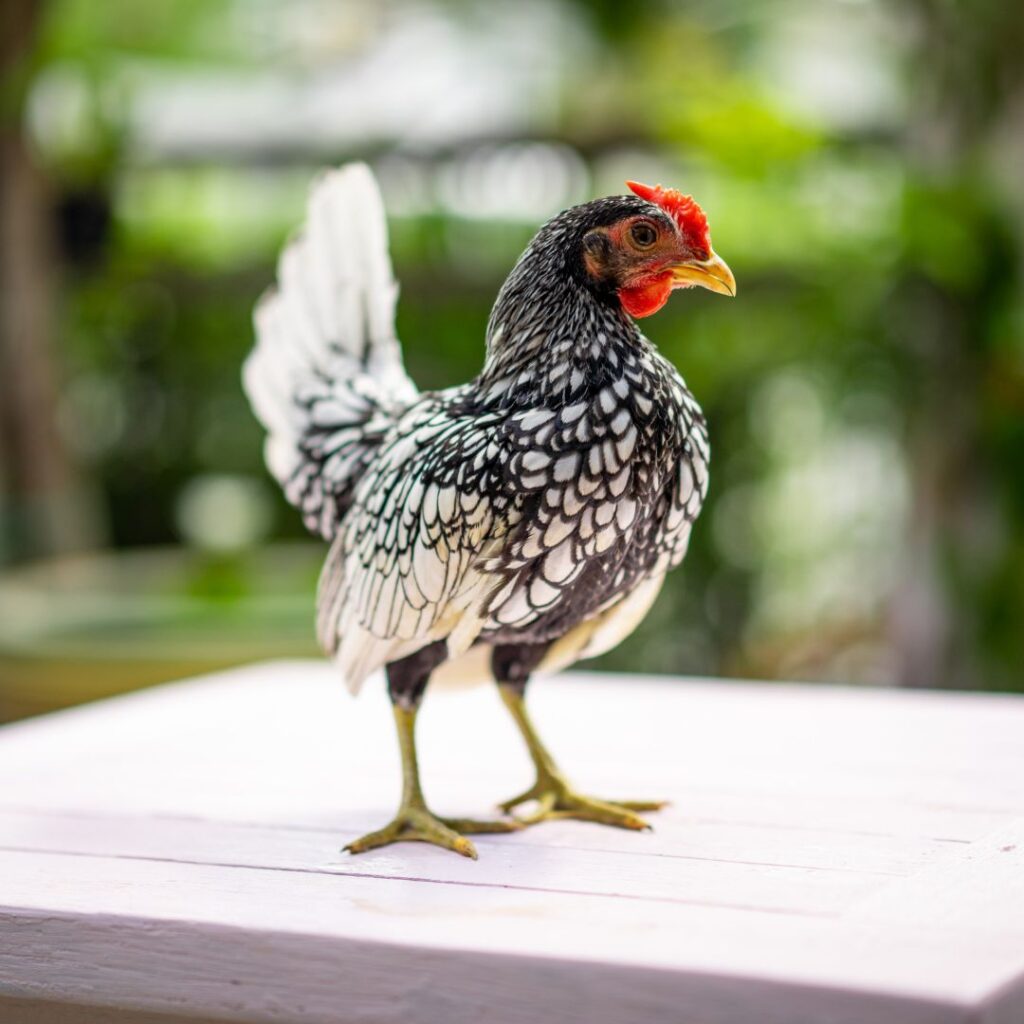
Care of the Silver and Golden Sebright
Chicken Coop Space
The Sebright chickens being bantam birds, require less housing space than standard-sized foul. Generally, a Sebright will require a minimum of 4 square feet per bird for a chicken coop (aka the hen house).
However, we always recommend more. This allows additional birds to be added to your flock and a buffer for some of your bantam flock to be a little larger in size.
Perch/Roost Space And Height
You’ll need enough Roost space (sleeping area) for each bird. Bantams being smaller, and Sebright in particular, very small, require less than a standard chicken. We’d suggest 8 in length per bird, plus extra space for future flock needs. Most bantams do well with roosts around 2 feet up to 4 feet high.
Perches
Perches are more like your family room space. It’s always nice to have options. Your flock is the same; they will use perches to find solitude from others or as just a place to hang out and watch what’s happening around them. Varying heights and styles are a great way to keep your flock from getting bored.
A perch can be an upside-down bucket/barrel you’re not using. Sturdy branches are securely placed, and ladder rungs are great too. If you have kids who have outgrown a playhouse or slide, give it one last breath of life for your chickens to perch upon. Pretty much anything that provides a space off the ground that can be easily moved/removed or cleaned.
Nesting Boxes
Don’t get excited; the nesting boxes are necessary, but you won’t be rustling up the eggs in great amounts. However, you do need to check these areas daily and clean them regularly all the same.
Same rule of thumb with all hens, one nesting box per four hens. A bantam hen needs a box that is 10 inches deep, 12 inches wide, and 10 inches high.
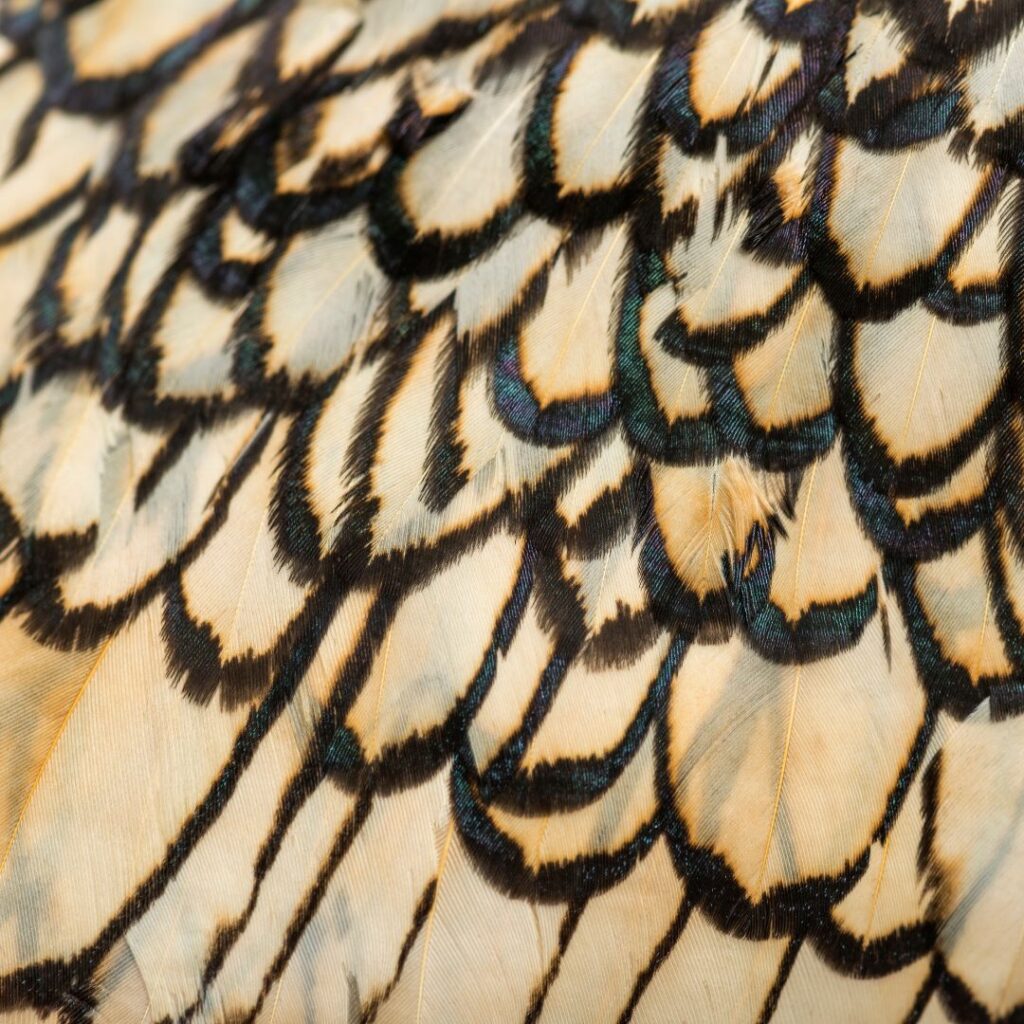
Run
Sebright bantams are small but active and curious. They need their space to stay happy and healthy. A run is so much more than just a square patch of dirt. Be sure you have a spacious area of 10 square feet per bird (remember to add extra to plan for possible future flock additions).
Within your run, you’ll be putting perch space, as we mentioned above, as well as a bathing area, a place to enjoy treats, and possibly a tented area for shelter from the elements.
Fencing Height
Sebright can fly, so a decent fence height is the best way to keep them ‘safely.’ 8-10 feet is recommended. In addition to fencing, you’ll want to also secure the top of the run area with hardware cloth to keep your bantams in and overhead predators out.
Dust Bath Area
All chickens need a dust bathing area. This will keep them looking beautiful but, more importantly, healthy. Dust baths allow your flock to clean and rid themselves of mites and lice.
Nothing fancy is needed; you can use an old tire or even a small kiddie pool.
As for what to put into the dust bath, diatomaceous earth, contractor sand, dried soil, and even herbs all mix well for any of your chickens.
Outdoor Shelter From Harsh Elements
A shade cloth, tarp, tented area, or even a board leaned against the coop are good ways to shelter your flock from rain and snow and provide them with a shaded area in extreme heat.
Feeders and Waterers
Sebrights are small little birds, so you won’t be able to hang your feeders and waterers as you would with standard-sized chickens. To keep feeders and waterers from getting contaminated, try placing them on a stable solid object like a piece of wood or split brick.
An alternative is to put the feeders and waterers into a kiddie pool or other contained area inside the coop. Bantams can still get in to eat and drink, but not with all the litter mess in the containers.

Sebright And Free-Range
While the Sebright chicken is an able forager and would love free-ranging, there are some real safety concerns to stay aware of.
They are small; even if you are out and gardening with them, they would be hard to spot and keep a safe watch on. Their size also makes them an ideal target for overhead predators like hawks. You normally don’t worry about ground predators with standard-sized chickens, such as snakes, but they’re dangerous to your bantams, especially small breeds like the Sebright.
Are the Silver and Golden Sebright Tolerant to Different Climates?
Sebright chickens (both Silver and Golden Sebright) are similarly tolerant to Hot Climates and Cold Weather (warm weather is better than cold).
The key is to keep indoor coops secure, rot-free, and well-ventilated. The run should provide shelter from extreme elements.
What is the Lifespan of a Sebright chicken?
Seven up to twelve years.
Read About The Mille Fleur D’Uccle Bantams Here.
Is The Silver or Golden Sebright Right For You?
The Silver and Golden Sebright Bantam is worth considering if you’re looking for a truly eye-catching chicken breed. These little beauties will add some serious flair to your flock.
If egg production is your priority as a hobby farmer, you may be disappointed in almost any bantam breeds.
Bantam clubs are all over the U.S. This is a great choice for an ornamental breed to bring to show or involve your children in 4H.
Whether you’re an experienced chicken keeper or just getting started, the Sebright Bantam is a breed that anyone can appreciate.


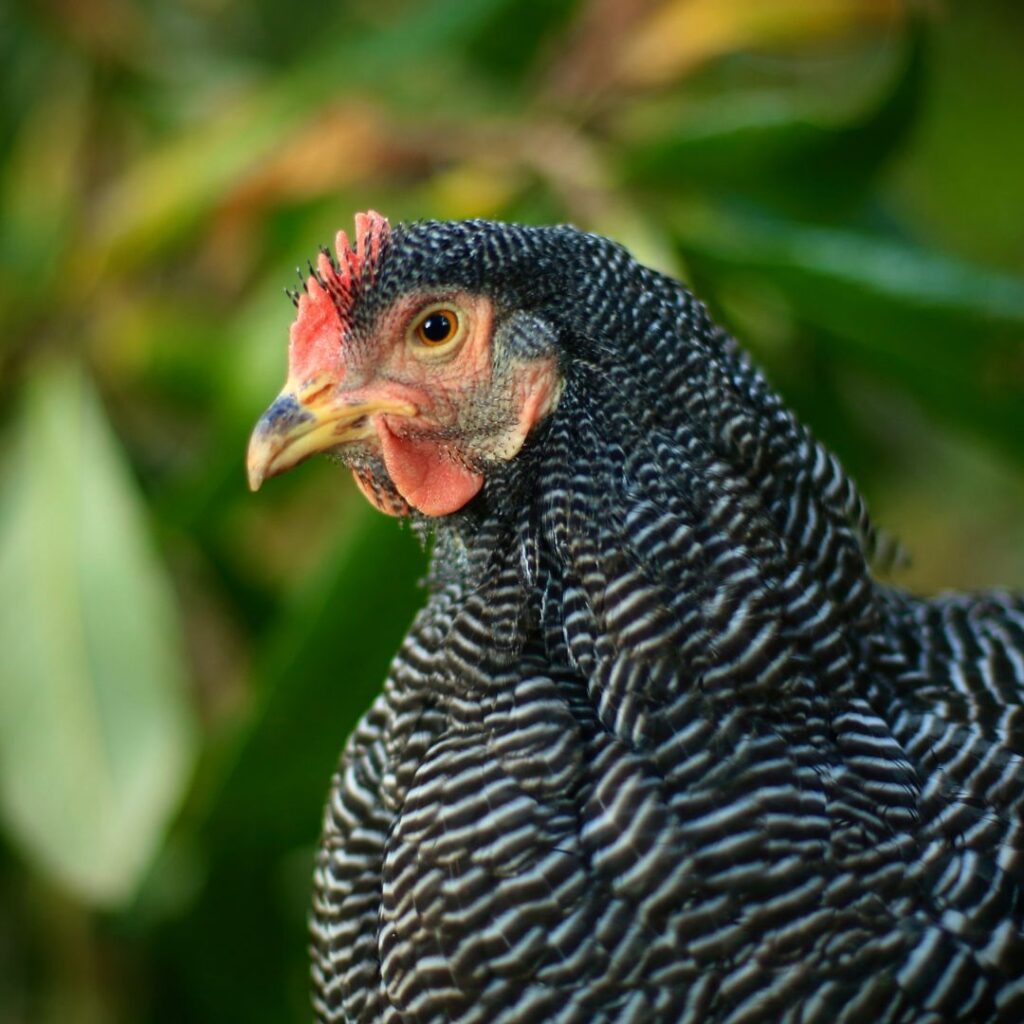
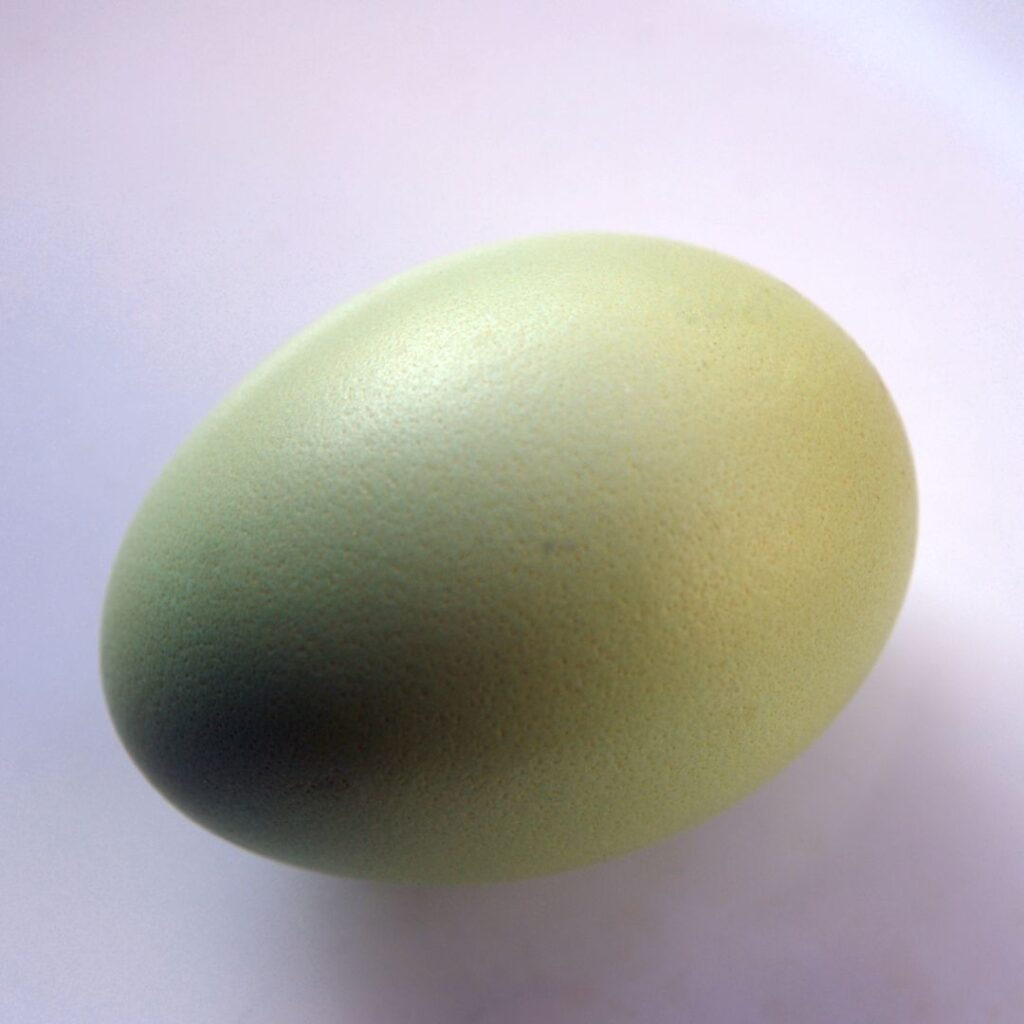
Pingback: Golden Laced Wyandotte Chicken; About The Wyandotte Chicken Breed
Pingback: 18 Cold Hardy Chicken Breeds For Harsh Winters - Gilmore's
Pingback: Cochin Chickens: What To Know - Gilmore's
Pingback: Leghorn Chickens: What To Know Before Buying One - Gilmore's
Pingback: Jersey Black Giant Chickens: The Breed For You? - Gilmore's
Pingback: Raising Backyard Chickens; Tips For Beginners - Gilmore's
Pingback: Tips For Buying Backyard Chickens; Your 2022 guide - Gilmore's
Pingback: 15+ Best Egg Laying Chicken Breeds; Qty, Color, Size Of Eggs